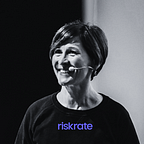So, You’re getting ready to Slush? Points to boost your one-to-one investor meetings in your pitch deck
Includes also a tip of absolutely-must-to-do during your visit in Helsinki
This blog series is dedicated to Cash — from startup’s to corporate treasuries.
Got it. Good news is that Slush party time in Helsinki is heading very soon! It’s soon time to start to check out some of the cool site events. The first one to join is a cool Pre Slush morning-swim in Allas Sea Pool Helsinki. A dip in the 7 C Gulf of Finland is something absolutely-must-to-do in Helsinki and not to never forget.
So, if you’re going to meet some investors in Helsinki, here’s some points to boost your investor negotiations in your pitch deck.
Rule number One. Forget EBITDA — show that you can maximize monthly MRR and minimize monthly Churn
Monthly recurring revenue spots the subscription each month. It’s the most important SaaS metrics of all. Make sure you’re doing it right — I’ve seen several companies tracking this directly from revenue of fixed-period-billing, both wrong. You can track this against your monthly revenue, but keep MRR calculation in your own hands (or software). If your rate of new customer acquisition (MRR) exceeds the churn rate, your SaaS business will grow! So easy.
If you don’t have subscription management software in use, raw data on SaaS metics can be calculated in google sheets or excel. Add some graphics to make is easy to understand. Make sure you still have the most important agreements available in e-tool.
And for your update, MRR includes:
+ New subscriptions per month per customer
+ Churned subscriptions per month per customer
+ Upselling subscriptions per month per customer
MRR does not include:
- Setup fees or one-off fees
- consultancy fees or any non-recurring fees
- Credit adjustments or credit notes
Churn rate is the amount of customers or subscribers who cut with service during a given time period. Note that Churn is growth decelerator and it impacts negatively on your MRR and your valuation. A high churn rate always signals a problem. In that case, focus to solve the issue before get new subscriptions. If your rate of new customer acquisition (MRR) exceeds the churn rate, your SaaS business will grow.
Rule number two: just in case, prepare Cash forecast to pitch your 12–24 month funding need
SaaS companies, like the other sectors too, are worth the present value of their estimated future cash flow. SaaS is winner takes it all -game: higher the growth, less profitability and higher valuation. The faster the business decides to grow, the worse the losses become because. Everybody pay attention to the market leader. It becomes a powerful, self-reinforcing phenomenon, and the faster you can get there, the better.
More than else, this affects to cashflow.
Nobody is interested in your profitability. It’s month to month growth what matters. It’s important that you forget accounting and focus on 12 months cash forecast instead. Keep it simple. It’s important to separate operational and financial cashflow from each other, so that investor can make a quick estimate on your funding need.
Sales Funnel
An overview of your customer acquisition channels. Be prepared to track your funnel metrics and conversion rates like visitors seeing the campaign, visitors to web page, number of trials and number of visitors.
Customer Acquisition Costs (CAC)
Customer acquisition is one the biggest expenses for SaaS companies. You can calculate CAC by adding up all your monthly marketing and sales related expenses. And then dividing that number by the number of new customers. Payback period is how quickly the business recoups the Customer Acquisition Costs (CAC). Customer acquisition cost or CAC should be the full cost of acquiring customers, stated o a per user/customer basis.
There are different ways to calculate customer acquisition cost (CAC). Usually, we are too optimistic in the costs and we only include social media costs to CAC. To be honest, that’s not the right way. CAC is marketing & sales costs from the previous month divided by the number of new deals committed during the month.
Average revenue per Account (ARPA)
This number is tells you the average monthly revenue per customer. It is useful to look at this for just the new customers booked in the month. Plot a trend line to show you the average price point that your new customers have chosen.
Before financial due diligence, check with your Accounting company
COGS
means all costs associated with one sale. Typically in SaaS, that means cost of the external services and software licenses. If cost has an impact over extended time of the period (like servers, user rights and licenses), it needs to be booked as recurring in accounting.
EBITDA and R&D capitalization
Many SaaS companies capitalize their development costs which has an impact on EBITDA and Equity ratio. Go through R&D capitalization rules and reporting with your accounting company and make sure it’s approved by your Auditor.
Taxes and Social security costs
Make sure that all obligations, like taxes and social security costs are paid promptly in time.
Balance sheet and agreements
The most important items in your balance sheet are shareholder equity, external loans and customer receivables.
Wish you very productive and successful Slush-time in Helsinki! Looking forward to see you in Allas Sea Pool. And remember to bring your towel and wool-cap : )
The author is the Founder of BackedByCFO, CFO As A Service from seed to IPO, the greatest passion to help CEO’s with cashflow and metrics
